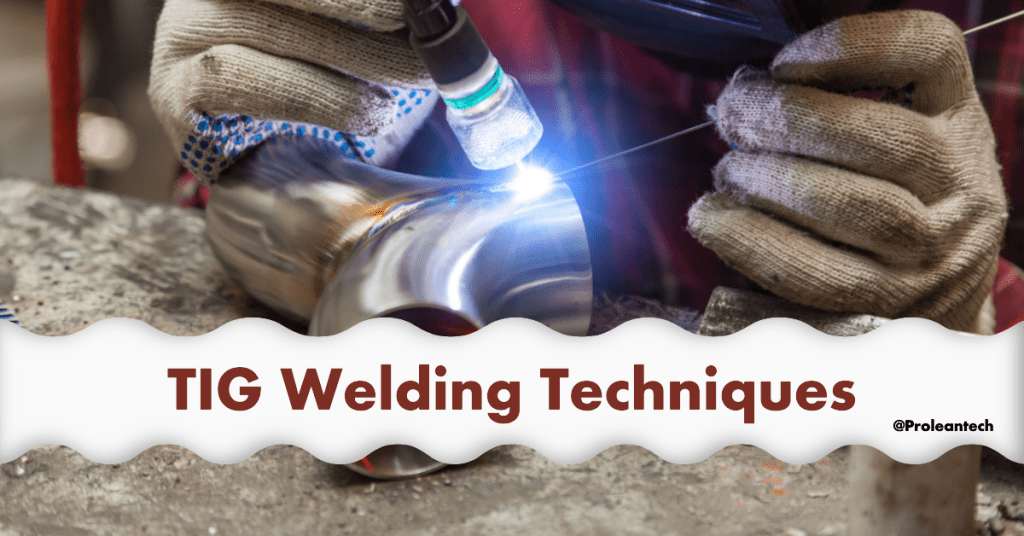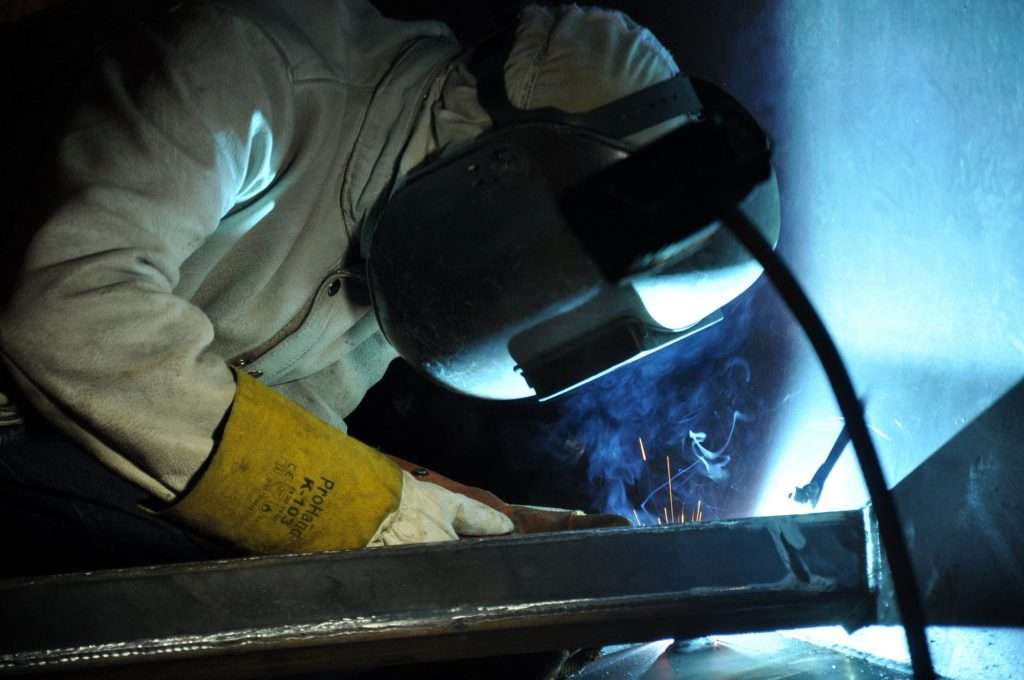
TIG Welding, also known as Tungsten Inert Gas Welding, is a popular welding process that offers a high level of precision, control, and cleanliness. The process involves using a non-consumable tungsten electrode to produce an electric arc, which is then used to heat and fuse the base materials together. A shielding gas, typically argon or helium, is used to protect the weld area from atmospheric contamination.
The primary advantage of TIG welding is its ability to create strong, high-quality welds with minimal distortion and spatter. This makes it ideal for a variety of applications, particularly where aesthetics and precision are of utmost importance. TIG welding is also highly versatile, being able to weld various types of metals, including steel, stainless steel, aluminum, and more.
This article covers TIG welding, including its uses and applications, necessary equipment and tools, safety and workspace setup, techniques for precision and performance, tips for mastery, and many more.
TIG Welding Uses and Applications

TIG welding
TIG welding is an incredibly versatile welding process that finds applications in a wide range of industries, from aerospace to marine to automotive. Its precision, control, and cleanliness make it ideal for applications where aesthetics and accuracy are crucial.
Additionally, TIG welding is a popular choice among artists and hobbyists, allowing for intricate and unique metal sculptures, furniture, and jewelry. In this article, we will explore the many uses and applications of TIG welding, as well as tips and tricks for enhanced precision and performance.
1. Industrial Applications
TIG welding has a wide range of industrial applications, thanks to its precision and versatility. Some common uses include:
- Automotive: TIG welding is often employed in the manufacture and repair of automotive components, particularly those made of aluminum or stainless steel. It’s also popular for custom fabrication work, such as creating roll cages and exhaust systems, thanks to its clean and precise welds.
- Aerospace: TIG welding is commonly used in the aerospace industry to create strong, lightweight structures and components. The high level of precision offered by TIG welding ensures that critical parts, such as fuel tanks and engine components, are made with utmost accuracy and reliability.
- Marine: TIG welding is ideal for marine applications, as it produces strong, corrosion-resistant welds that can withstand the harsh conditions of the marine environment. It’s often used for constructing and repairing boat hulls, railings, and other structural components.
2. Artistic Applications
TIG welding is not just limited to industrial settings; it’s also a popular choice among artists and hobbyists. The aesthetic and creative possibilities offered by TIG welding are vast, with many using the process to create intricate and unique metal sculptures, furniture, and jewelry.
The ability to weld a wide range of metals, along with the precise control offered by TIG welding, allows artists to experiment with various materials and techniques. Additionally, the clean and polished appearance of TIG welds adds to the overall visual appeal of the finished piece.
The Art of TIG Welding: Aesthetic and Creative Possibilities
In addition to its industrial applications, TIG welding also offers a wide range of artistic possibilities. The precision and control offered by the process allow creating of intricate and unique metal sculptures, furniture, and jewelry. In this section, we will explore the creative potential of TIG welding and the possibilities it offers for elevating your artistic skills.
Metal Sculpture
TIG welding, with its capacity for intricate detail and clean finishes, has become a popular tool among metal sculptors. Artists can manipulate various metals and alloys, creating complex and visually striking designs that are not achievable through other metal welding methods.
Unique Furniture
Custom-made metal furniture is another area where TIG welding shines. Designers and fabricators can create one-of-a-kind pieces with intricate and detailed welds, adding an artistic element to functional items.
Jewelry and Accessories
TIG welding’s precision and versatility make it an ideal choice for crafting unique and eye-catching jewelry and accessories. From delicate filigree work to bold statement pieces, TIG welding offers artists the ability to create intricate designs with a variety of metals and finishes.
Essential TIG Welding Equipment and Tools
In order to perform TIG welding, certain equipment and tools are necessary. This section covers the essential items you’ll need, including the TIG welder itself, tungsten electrodes, shielding gas, welding torch, and personal protective equipment.
| Equipment/Tool | Description |
|---|---|
| TIG Welder | The critical piece of equipment for TIG welding comes in various sizes, capacities, and price points |
| Tungsten Electrodes | Non-consumable tungsten electrodes used to create the electric arc, come in different sizes and types depending on the material being welded and the specific application |
| Shielding Gas | Necessary to protect the weld area from atmospheric contamination, commonly used gases are argon and helium with argon being preferred for most applications due to its affordability and effectiveness |
| Welding Torch | The tool used to hold and manipulate the tungsten electrode during the welding process comes in various styles and sizes with some offering additional features such as water cooling or fingertip controls for amperage adjustment |
| Personal Protective Equipment (PPE) | Essential for safety, includes a welding helmet with an auto-darkening lens, welding gloves, a welding jacket or apron, and safety glasses. |
Try Prolean Now!
Preparing for TIG Welding: Safety and Workspace Setup
1. Workspace Setup
A well-organized and safe workspace is crucial for successful TIG welding. Ensure your workspace is clean and free from clutter, with adequate ventilation to prevent the buildup of harmful fumes. A sturdy workbench with a non-flammable surface is also necessary.
2. Electrical Safety
TIG welding involves working with high voltages and currents, so it’s essential to ensure your workspace is equipped with the proper electrical setup. This includes having a dedicated circuit for your welding equipment and ensuring all connections and cables are in good condition.
3. Fire Safety
As with any welding process, there is a risk of fire when TIG welding. Be sure to have appropriate fire extinguishing equipment on hand, such as a fire extinguisher or bucket of sand. Additionally, remove any flammable materials from the vicinity of your workspace.
TIG Welding Techniques for Enhanced Precision
Now, let’s focus on TIG welding techniques that can enhance precision and consistency in welds. Proper torch and electrode angle, pulsed TIG welding, and steady travel speed are some of the key techniques that can be used to achieve high-quality welds.
Proper Torch and Electrode Angle
Maintaining the correct torch and electrode angle is crucial for achieving precise and consistent welds. The torch should be held at a 75-80 degree angle to the workpiece, while the electrode should be positioned at a 10-15 degree angle to the weld pool.
Pulsed TIG Welding
Pulsed TIG welding is a technique that involves rapidly alternating between high and low amperage settings. This allows for better control over the heat input and can result in more precise and consistent welds, particularly when working with thin or heat-sensitive materials.
Steady Travel Speed
Maintaining a consistent travel speed during TIG welding is essential for achieving even and precise welds. Moving too quickly can result in insufficient penetration and weak welds while moving too slowly can cause excessive heat input and distortion.
TIG Welding Techniques for Improved Performance
| Technique | Description |
|---|---|
| Preheating | Improves overall performance of weld, particularly when working with thick or high-strength materials. Minimizes thermal stress and distortion, ensuring a strong and durable weld. |
| Post-weld Heat Treatment | Enhances the performance of the TIG weld. Treatments such as stress relieving or annealing can alleviate residual stress and improve the mechanical properties of welded joints. |
| Proper Filler Metal Selection | Crucial for achieving optimal weld performance. Factors such as base material type, joint design, and desired mechanical properties should all be considered when selecting a filler metal. |
Troubleshooting Common TIG Welding Issues
TIG welding is a highly precise and versatile welding process; however, it is not without its challenges. In this section, we will discuss some common TIG welding issues and troubleshooting techniques to overcome them.
| Issue | Possible Causes | Prevention Techniques |
|---|---|---|
| Contaminated Welds | Dirty base materials, improper shielding gas flow, or contaminated electrode | Ensure all materials are clean, maintain proper gas flow, and regularly inspect electrodes for signs of contamination |
| Inconsistent Weld Beads | Uneven travel speed, improper torch angle, or fluctuating amperage | Practice maintaining steady travel speed, correct torch angle, and stable amperage settings |
| Cracked Welds | Excessive stress or rapid cooling | Preheat the base material and allow the weld to cool slowly before subjecting it to stress |
Conclusion: Elevating Your TIG Welding Skills
Mastering TIG welding requires patience, practice, and a thorough understanding of the process and techniques involved. By investing in the proper equipment, maintaining a safe and well-organized workspace, and continually refining your skills, you can elevate your TIG welding abilities and achieve enhanced precision and performance in your projects.
If your business or industry could benefit from the advantages offered by TIG welding, ProleanTech specializes in TIG welding for all needs. Contact us Today to get sheet metal fabrication quotes!
FAQ’s
Can TIG welding be used on all metals?
TIG welding is highly versatile and can be used on a wide range of metals, including steel, stainless steel, aluminum, and more. However, some metals, such as cast iron or certain types of aluminum alloys, may require special techniques or precautions.
Is TIG welding difficult to learn?
TIG welding is considered more complex and challenging to master than other welding methods, such as MIG welding. However, with practice and dedication, it’s possible to become proficient in TIG welding and achieve high-quality, precise welds.
How do I know which type of tungsten electrode to use?
The choice of tungsten electrode depends on factors such as the material being welded, the desired weld properties, and the specific application. Some common electrode types include pure tungsten, thoriated tungsten, and created tungsten.
What kind of personal protective equipment (PPE) is necessary for TIG welding?
Essential PPE for TIG welding includes a welding helmet with an auto-darkening lens, welding gloves, a welding jacket or apron, and safety glasses. Additional PPE, such as earplugs or a respirator, may be necessary depending on the specific application and work environment.




0 Comments